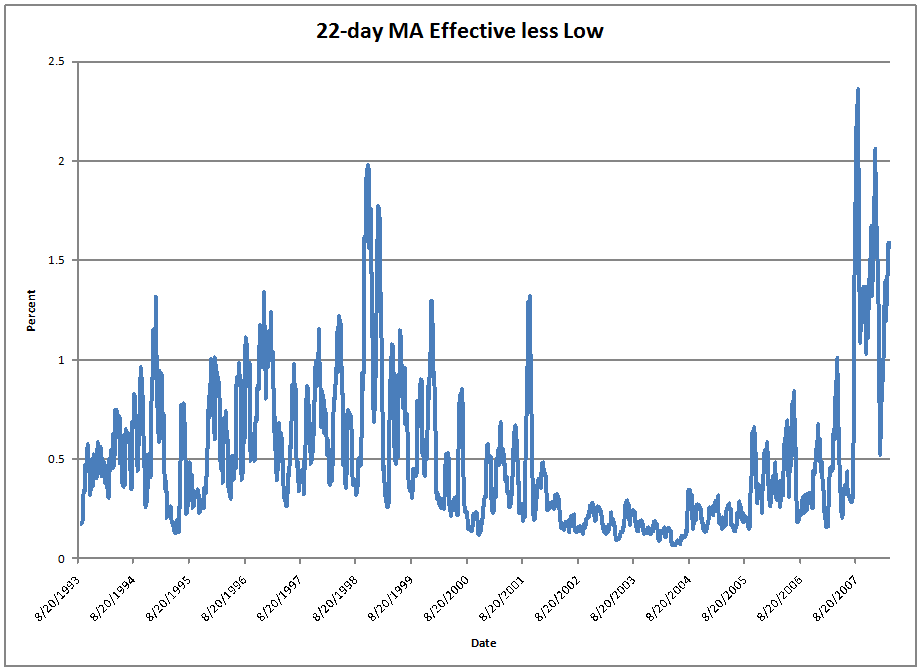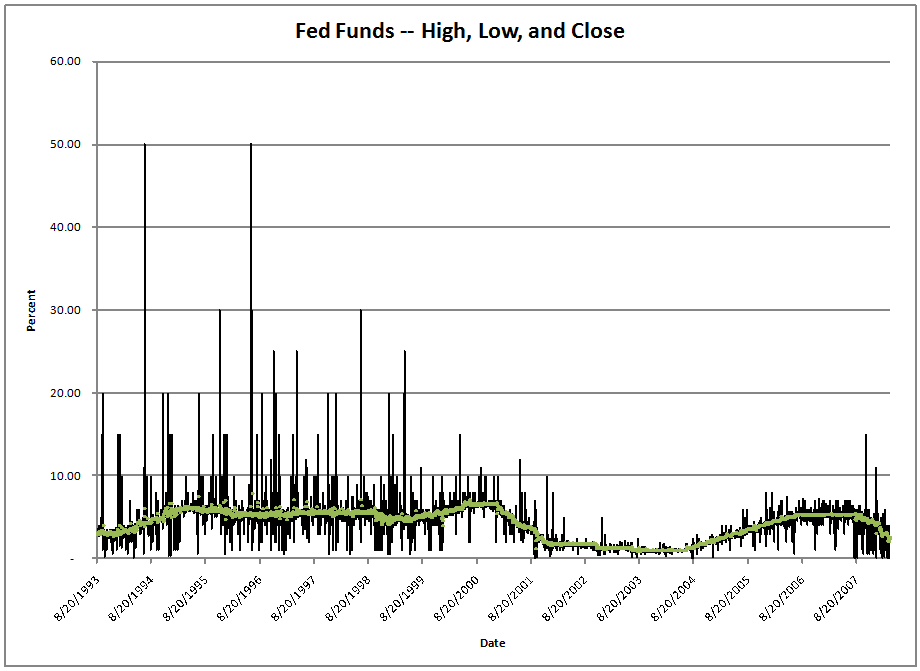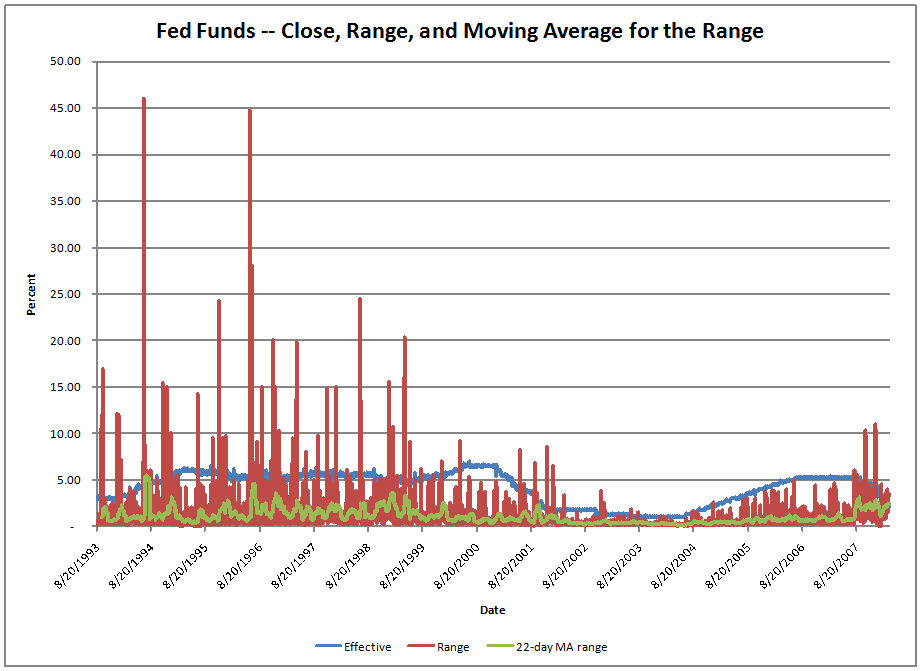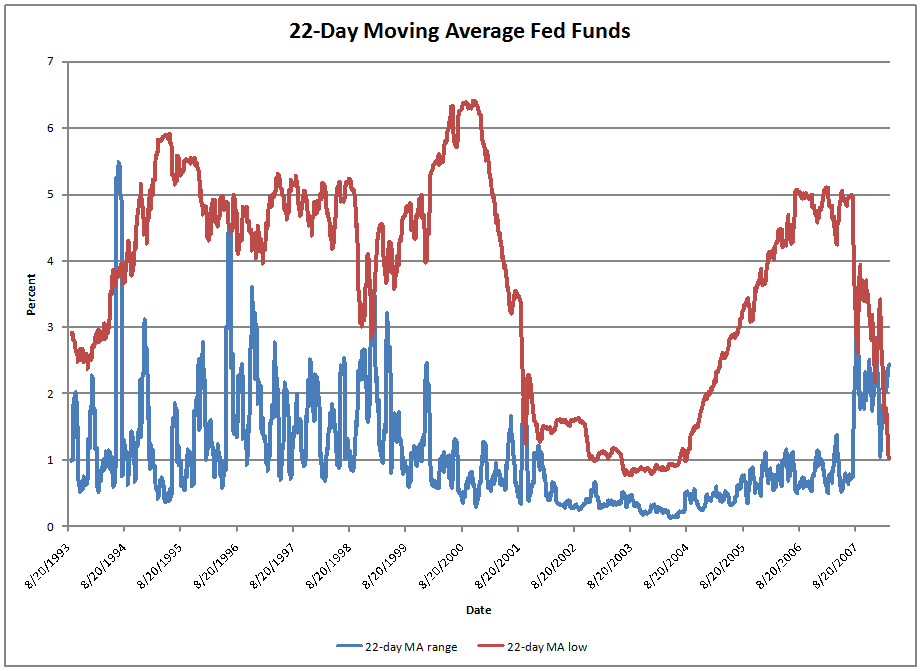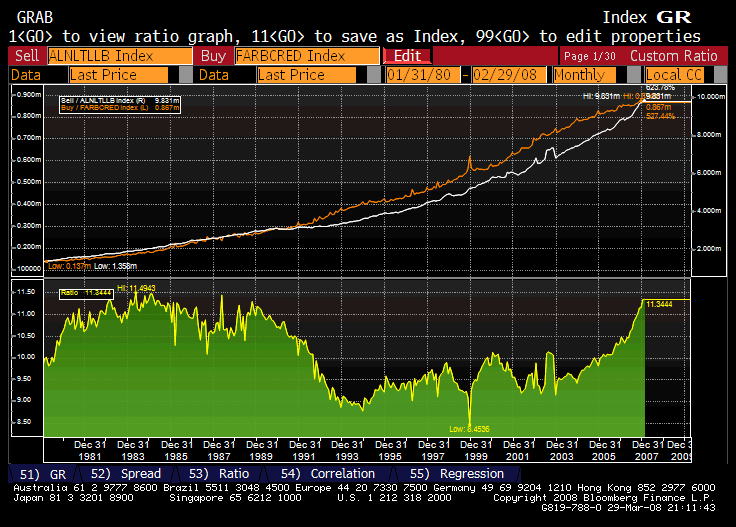Sternly Bashing the Bear Stearns Bailout
I find it interesting that some former senior people at the Fed are breaking the “code of silence.”? I don’t mean that those that leave the Fed go totally silent, but they are usually supportive of the current Fed if they speak.? Even Greenspan, who pushes his own legacy, is largely supportive of Bernanke.? But with Volcker speaking out, others are emboldened, like Vincent Reinhart.? I don’t know exactly what Reinhart said in his speech yesterday, but I would bet that it is similar to what he wrote here.
Some of his comments are similar to what I wrote in point 1 of this blog post of mine:
1) How to do a bank/financial bailout: a) wipe out common and preferred equity and the subordinated debt (and offer some warrants to the debtholders).? Make the senior debt take a haircut of 50% (and offer warrants), and the bank debt a haircut of 20% (and offer warrants). Capital is offered in exchange for the equity interest, together with some senior financing pari passu with the banks.? If the management and other stakeholders do not like those terms (or something like them), then don?t bail them out.
Now, realize I?m not crazy about ?lender of last resort? powers being in the hands of the government, but if we?re going to do that, you may as well do it right, and bail out depositors in full, while having others take modest to large haircuts.? There is no reason why the government/Federal Reserve should bail out common or preferred equityholders, and those that bought risky debt should pay part of the price as well.? This should only be done for institutions where significant contagion effects could affect other financial institutions.? The objective is to create a firewall for depositors, and the rest of the financial system.
There were better ways to achieve the protection of the derivatives market the the Fed wanted to achieve.? Take a page out of the playbook of the insurance regulators that are sweating over the financial guarantors.? Are they worried about the holding companies that own the operating insurers?? No, they are only worried about the operating insurers.? In the same way, the Fed didn’t need to sell off Bear Stearns, and (in a way) backstop the sale.? All they needed to do was say that they would provide credit to the derivatives arm if Bear failed.
Hindsight may be 20/20, but the Fed neglects Bagehot’s rule to lend infinitely at a penalty rate in a crisis.? The penalty has not been there.? Beyond that, Reinhart points to the ways that the Fed is taking credit risk onto its balance sheet, which limits its flexibility.
Can that credit risk have negative impacts on the Fed?? Yes, but maybe those effects aren’t big.? The Fed is a profitable institution.? How profitable?? Who gets the profits?? Well, the US Treasury gets the profits, essentially unifying the Fed with the US government in an economic sense.? From fiscal 2005-2007, the Fed earned $18.1, 21.5, and 28.5 billion respectively.? Any losses from credit risk will diminish what the Fed dividends back to the US Treasury, which will raise borrowing and taxes.? So the impact is minor, in one sense — you can destroy the value of the US Dollar, but the Fed is an arm of the US Government in an economic sense.? It dies only when the US Government dies, or when the US Government eliminates it (hey, it’s happened before in US history).


